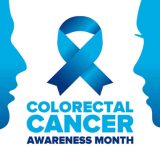Even though they cause one out of every five deaths in the United States, many people have an inaccurate perception of a heart attack. The longer a heart attack goes unrecognized, the greater chance it has of causing severe damage or death. Thus, the speed at which a heart attack is detected is a crucial factor in a person’s survival. By learning how to recognize the beginning stages of a heart attack, those in peril can get help quickly and avoid becoming a tragic statistic.
About a Heart Attack
Known clinically as an acute myocardial infarction, a heart attack is the death of heart tissue caused by a complete blockage of an artery that supplies blood to the heart. When deprived of oxygen from the blood for longer than 30 minutes, heart tissue begins to die. This lack of oxygen causes an electrical instability within the chambers of the heart, preventing the heart from adequately pumping blood throughout the body. In the worst- case scenario, permanent brain damage and death can occur when the brain is deprived of blood flow for longer than five minutes.
The Need to Know
In a recent survey appearing in the May 2009 issue of The International Journal of Clinical Practice, researchers found that many people are diagnosed with heart disease only after they develop symptoms. A survey of almost 14,000 people with diabetes or other risk factors for heart disease suggested that doctors are routinely missing opportunities to identify heart ailments early.
According to epidemiologist and study co-author Kathleen M. Fox, PhD, “The fact that only a small number of people reported being diagnosed as a result of screening indicates that we are missing opportunities to prevent heart disease.” Unfortunately, this finding also means that many people having a heart attack are unaware they have heart disease.
Because an acute myocardial infarction may be someone’s first evidence of a heart problem, its symptoms are likely to be mistaken for stress, indigestion or a pulled muscle.
Heart Attack Symptoms
While some heart attacks are sudden and intense with the characteristic clutching of the chest, most of them start slowly, with mild pain or discomfort. Too often, people affected aren’t sure what’s wrong and wait too long before getting help. The seven most common heart attack symptoms, include:
- Chest Discomfort or Pain – This sensation can come and go and has been described as a tight ache, pressure, fullness or squeezing in the center of the chest lasting more than a few minutes.
- Upper Body Pain – Pain or discomfort may spread beyond the chest to shoulders, arms, back, neck, teeth or jaw. Some people have upper body pain with no significant chest discomfort.
- Stomach – Sometimes mistaken for heartburn, pain may extend downward into the abdominal area.
- Shortness of Breath – Often occurring prior to chest discomfort, a person may be short of breath.
- Sweat – Some people break into a cold, clammy sweat.
- Dizzy – A person may feel lightheaded or dizzy.
- Nausea – Some people feel nauseated or may vomit.
In general, symptoms appear to differ with gender. As with men, the most common heart attack symptoms for women are chest pain and discomfort. However, women are more likely than men to experience some of the other common symptoms, like shortness of breath, nausea/vomiting and back or jaw pain.
More for Women
According to Patricia A. Grady, PhD, RN, Director of the National Institute of Nursing Research, “Increasingly, it is evident that women’s symptoms (of a heart attack) are not as predictable as men’s.” Based on a National Institutes of Health study, the major symptoms and their prevalence prior to a heart attack in women, include:
- Unusual fatigue – 70 percent
- Sleep disturbance – 48 percent
- Shortness of breath – 42 percent
- Indigestion – 39 percent
- Anxiety – 35 percent
Every Second
Getting treatment right away improves the chance of survival and minimizes damage from a heart attack. Five minutes is too long to wait and try to self-diagnose. The sooner emergency medical attention is received, the greater chance a person has of surviving. Accordingly, even if unsure of a heart attack – dialing 911 could easily save minutes, which could be the difference between life and death.
It is likely that heart attacks would not be the leading cause of death if more people knew they had heart disease and knew the symptoms of a heart attack. To stay on the safe side, make sure you and your loved ones are screened for cardiovascular disease and are familiar with the signs of an impending, acute myocardial infarction.




